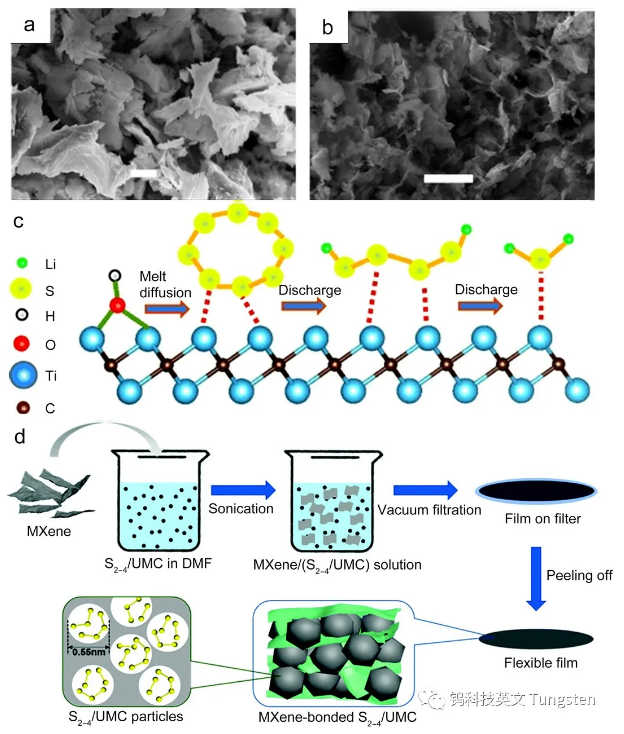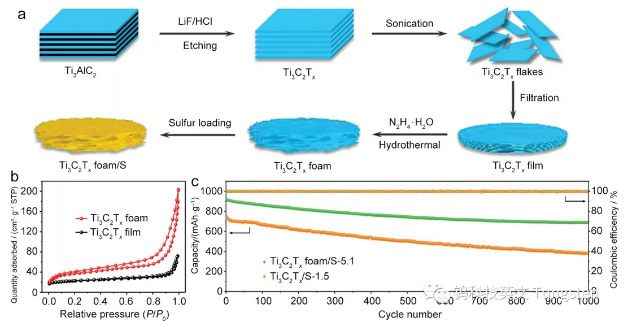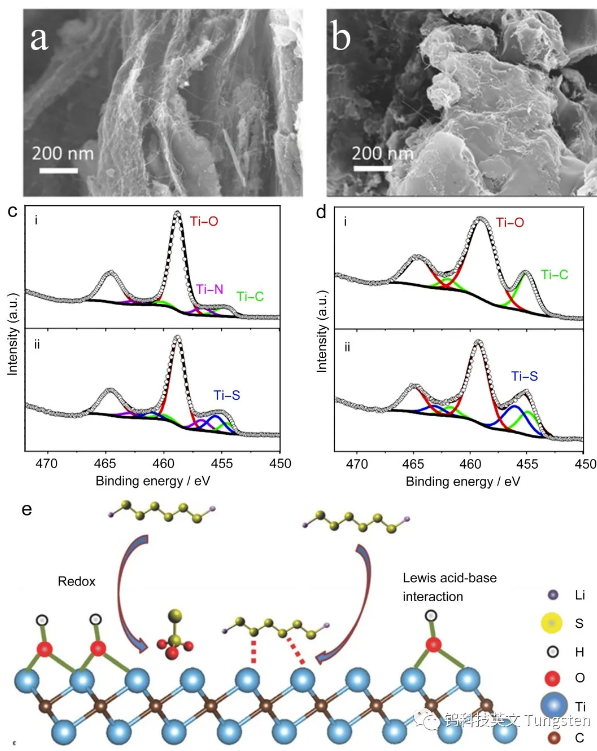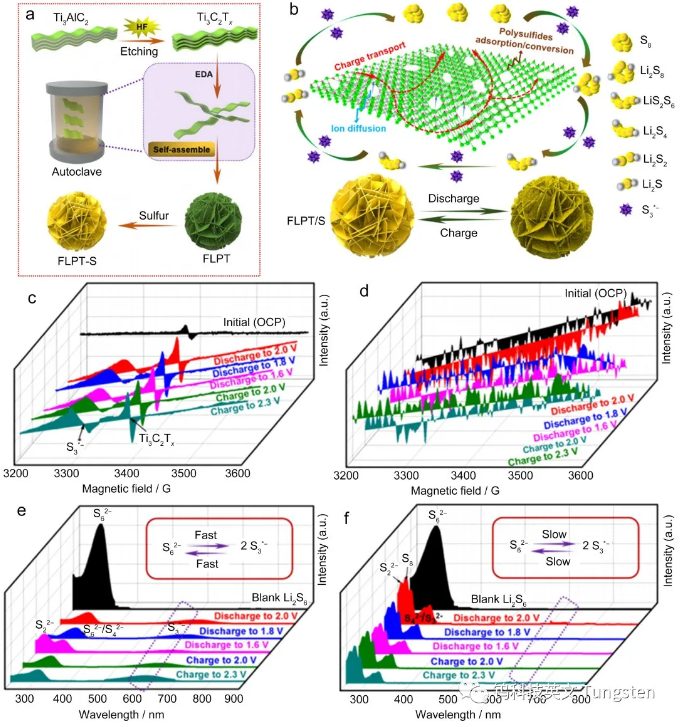
hotline:
17715390137
Tel/Wechat:
18101240246 (Technology)
0512-68565571
Email:mxenes@163.com (Sales Engineer)bkxc.bonnie@gmail.com
Scan the code to follow or search the official account on WeChat:
2D Materials Fronrier After paying attention,
click on the lower right corner to contact us,
Enter enterprise WeChat.
Professional Services Online

Two-dimensional (2D) transition metal carbides/nitrides (MXenes) have a clay-like structure with the general formula Mn+1Xn (where M corresponds to early transition metals, such as Ti, Mo; X corresponds to carbon atoms or nitrogen atoms, The surface functional groups are mainly (−F, −Cl, −O and −OH). Due to the good physical and chemical properties of MXenes, more than 750 institutions in 50 countries around the world have devoted themselves to the research of these new two-dimensional materials. Since 2011 Since then, more than 30 kinds of MXene have been synthesized and are widely used in the fields of energy, biomedicine, catalysis, devices and sensors. MXenes has unique physical and chemical properties, such as high conductivity (2400 S·cm-1 ), better flexibility, high mechanical strength, ultra-high specific surface area and surface functional groups, which makes MXenes a potential sulfur cathode matrix material. Professor Yang Shubins research group from Beijing University of Aeronautics and Astronautics published an online title in the English journal Tungsten on Harnessing the unique features of MXenes for sulfur cathodes
review article, this article systematically summarizes the research progress of MXenes for sulfur cathodes from the following aspects: (1) The physical interaction of MXenes to enhance sulfur cathodes; (2) Use MXene to chemisorb LiPS on the sulfur anode: use functional groups or modified active sites to anchor polysulfides and inhibit the shuttle of polysulfides; (3) use MXenes to catalyze polysulfide conversion on the sulfur anode :Improve the kinetics of polysulfide conversion catalysis and further increase the rate performance. Finally, this paper considers and prospects the future development of MXene in the direction of improving sulfur cathodes.
 Summary
Summary
Lithium-sulfur (Li-S) batteries have become a research hotspot in electrochemical energy storage due to their theoretical energy density of 2600 Wh·kg-1. However, the dissolution and shuttle of sulfur positive polysulfide, low conductivity and slow redox kinetics result in extremely low coulombic efficiency and poor cycle and rate performance of lithium-sulfur batteries. In order to solve the above problems, researchers have developed various composite sulfur cathodes based on two-dimensional (2D) materials. Because two-dimensional transition metal carbides and nitrides (MXenes) have good properties, such as superior conductivity, abundant active sites, and adjustable surface functional groups, the use of MXenes as a matrix material for sulfur cathodes has gained academic approval. extensive attention. This review summarizes recent research progress in the development of new composite sulfur cathodes using the unique properties of MXenes, and discusses the various roles of MXenes in sulfur cathodes, including promoting electron transfer, regulating polysulfide adsorption, and catalyzing polysulfide conversion. Etc., and proposed a future research strategy for the rational design of high-performance MXene-based sulfur cathodes.
cutting edge
With the widespread development of clean and sustainable energy such as wind, tidal energy, and solar energy, the electricity generated by these renewable energy sources needs to be stored before being supplied, which requires the development of high energy density battery systems. Lithium-sulfur (Li-S) battery is composed of sulfur positive electrode (capacity 1675mAh·g-1) and lithium metal negative electrode (capacity 3860 mAh·g-1), and its theoretical energy density is as high as 2600 Wh·kg-1 or 2800 Wh ·L-1, is expected to power large portable devices.
Li-S batteries are based on the conversion reaction of sulfur to lithium sulfide (Li2S), which involves a multi-step electrochemical redox process of sulfur cathodes, accompanied by a solid-liquid-solid three-phase transition. During the discharge, the solid S8 molecules are reduced to long-chain lithium polysulfides (LiPSs) and dissolved in the electrolyte (Li2Sn, 4
(1) The electrochemical insulation of sulfur and its discharge product Li2S severely hinders the transfer of electrons on the sulfur anode, thereby affecting the utilization of sulfur. In addition, insoluble and insulating Li2S deposits uncontrollably on the conductive electrode material, preventing subsequent chemical reactions.
(2) The density of sulfur changes significantly (2.03 vs. 1.66 g·cm-3), and the volume expansion rate of sulfur is 80% in a fully discharged state. Such repeated volume changes can cause structural damage and the shedding of active materials on the current collector, resulting in a sharp drop in capacity.
(3) The hysteresis kinetics of the conversion reaction and the dissolution of the charged product lithium polysulfide (Li2Sn, 4
In order to solve the above-mentioned problems, researchers use physical or chemical interactions to confine the active sulfur in the nanostructured conductive matrix material.
Based on this, the researchers used various carbon materials (including porous carbon, graphene, carbon cloth and nanotubes), functionalized polymers and metal oxides/sulfides as the matrix materials of the sulfur cathode to improve the conductivity of the sulfur cathode It can slow down volume expansion and inhibit the shuttle of polysulfides.
In this paper, the research progress of MXenes for sulfur cathodes is systematically reviewed from the following aspects: (1) The physical interaction of MXenes on the enhanced sulfur cathodes
① MXenes are used for electron conduction (Figure 1)

Figure 1. a SEM image of d-Ti2C (layered Ti2C nanosheets formed in dimethyl sulfoxide) and S-impregnated d-Ti2C; c heat treatment or contact with polysulfides, with S-Ti-C bond Schematic diagram of replacing the Ti-OH bond on the surface of MXene [1]; Schematic diagram of the preparation process of flexible MSC (MXene bonded S2-4/ultramicroporous carbon) film [2].
[1] Liang X, et al. Angew. Chem. Int. Ed. 2015;54(13):3907. [2] Zhao Q, et al. Nanoscale. 2019;11(17):8442.
② MXene for physical restriction

Figure 2. a Schematic diagram of self-supporting Ti3C2Tx foam/S cathode synthesis. b Ti3C2Tx film and Ti3C2Tx foam N2 adsorption-desorption isotherm; c Ti3C2Tx foam/S and Ti3C2Tx/S cathode long cycle performance at 1C [3].
[3] Zhao TK, et al. Nanoscale. 2018;10(48):22954.
(2) Use MXene to chemisorb LiPS on the sulfur anode: use functional groups or modified active sites to anchor polysulfides and inhibit the shuttle of polysulfides;

Figure 3. SEM images of a CNT-Ti3C2 and b S/CNT-Ti3C2; using XPS to study the interaction between MXene phase and LiPS, c Ti2p spectra of Ti3C2(i) and Ti3C2-LiPS(ii); d Ti3CN (I) and Ti3CN-LiPS (ii) d Ti 2p spectra; schematic diagram of the two-step interaction between e-hydroxy-modified MXene phase and polysulfide [4].
[4] Tang H, et al. Adv Sci. 2018;5(9):1800502.
(3) Use MXenes to perform polysulfide conversion catalysis on the sulfur anode: improve the kinetics of polysulfide conversion catalysis and further improve the rate performance.

Figure 4. a schematic diagram of synthetic flower-like porous Ti3C2Tx (FLPT); b schematic diagram of the interaction between FLPT and sulfur species during cycling; c ectopic electrons of FLPT-S and d CNTs-S in different charge/discharge states Paramagnetic resonance spectrum; e FLPT-S and f CNTs-S UV-visible absorption spectra under different charging/discharging states [5].
[5] Xiao ZB, et al. ACS Nano. 2019;13(3):3404.
Summary and outlook
This review summarizes recent research progress in the development of new composite sulfur cathodes using the unique properties of MXenes, and discusses the various roles of MXenes in sulfur cathodes, including promoting electron transfer, regulating polysulfide adsorption, and catalyzing polysulfide conversion. Wait. Finally, this paper considers and prospects the future development of MXene in the direction of improving sulfur cathode from three aspects: the mechanism of MXenes catalyzing sulfur cathode, the atomic engineering to improve the performance of sulfur anode, and the MXene-derived heterojunction to enhance the performance of sulfur cathode.
Information source: Tungsten Technology English Tungsten
This information is from the Internet for academic exchanges. If there is any infringement, please contact us and delete it immediately

| Reminder: Beijing Beike New Material Technology Co., Ltd. supplies products only for scientific research, not for humans |
| All rights reserved © 2019 beijing beike new material Technology Co., Ltd 京ICP备16054715-2号 |